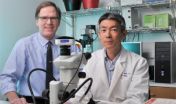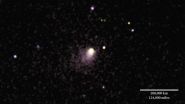(Press-News.org) Researchers from the Cochrane Infectious Disease Group, co-ordinated through the editorial base in LSTM, conducted an independent review into the effectiveness of rapid diagnostic tests in diagnosing patients with visceral leishmaniasis (VL), published in The Cochrane Library today.
VL (or kala-azar) is caused by a parasite and results in fever, a large spleen and other health problems. It occurs in India, Bangladesh and Nepal, east Africa, the Mediterranean region and Brazil. Without treatment it can be fatal, and proper treatment can result in cure, so diagnosis is extremely important. The diagnosis of (VL) relies on showing Leishmania parasites in tissue samples and on serological tests. Parasitological techniques are invasive, require sophisticated laboratories, consume time, or lack accuracy. Recently, rapid diagnostic tests (RDTs) that are easy to perform and safe have become available.
Researchers found 24 studies, which contained information about five different RDTs, with a total of 4271 participants. The report describes how accurate these rapid diagnostic tests are for diagnosing VL in people who, according to their physicians, could have the disease. Only studies in which the researchers had used established methods to distinguish the people with VL from those who did not have the disease were used in the review.
One RDT, the rK39 immunochromatographic test gave correct, positive results in 92% of the people with VL and it gave correct, negative results in 92% of the people who did not have the disease. The test worked better in India and Nepal than in east Africa. In India and Nepal, it gave correct, positive results in 97% of the people with the disease. In east Africa, it gave correct, positive results in only 85% of the people with the disease.
A second RDT, the latex agglutination test gave correct, positive results in 64% of the people with the disease and it gave correct, negative results in 93% of the people without the disease. For the other RDTs evaluated, there are too few studies to assess their accuracy.
Each index test was analysed separately and to ensure differences were accounted for correctly the following factors were explored: geographical area, commercial brand of index test, type of reference standard, disease prevalence, study size, and risk of bias.
Marleen Boelaert from Institute of Tropical Medicine, Antwerp, one of the authors of the review said: "The best chance of a cure for VL lies in a correct diagnosis, so utilising accurate RDTs is of paramount importance. Our review indicates that the rK39 ICT shows higher sensitivity and specificity for the diagnosis of VL in patients with febrile splenomegaly and no previous history of the disease than the latex agglutination test, but the sensitivity is notably lower in east Africa than in the Indian subcontinent. The size of the studies involving the other RDTs lack accuracy, validation, or both."
INFORMATION:
http://onlinelibrary.wiley.com/doi/10.1002/14651858.CD009135.pub2/abstract
Cochrane review of RDTs for diagnosis of visceral leishmaniasis
Researchers from the Cochrane Infectious Disease Group review the effectiveness of rapid diagnostic tests in diagnosing patients with visceral leishmaniasis
2014-06-20
ELSE PRESS RELEASES FROM THIS DATE:
Creating friendships between African-American and Caucasian couples can reduce prejudice
2014-06-20
DETROIT — Recent research findings from Wayne State University show that the physical presence of romantic partners in intergroup friendships – friendships with different racial and ethnic groups, religious groups, or sexual orientations – positively influences interactions with people who are perceived to be different from themselves.
The study, "Creating positive out-group attitudes through intergroup couple friendships and implications for compassionate love," currently available online in the Journal of Social and Personal Relationships, found that couples that interacted ...
Experimentally testing nonlocality in many-body systems
2014-06-20
Science has recently published a study carried out by researchers at ICFO in collaboration with the Institute for Nuclear Research, Hungarian Academy of Sciences, which demonstrates the capability of detecting non-locality in many-body quantum systems by constructing multipartite Bell inequalities involving only two-body correlations.
In Quantum Theory, interactions among particles create fascinating correlations that cannot be explained by any means known to the Classical World. These correlations, usually known to be nonlocal, prove that the Quantum and Classical Worlds ...
Botany: Leafing out and climate change
2014-06-20
Global warming is generally expected to bring spring forward but, as a new study at Ludwig-Maximilians-Universitaet (LMU) in Munich shows, a concomitant influx of plant species from warmer southern latitudes could counteract this effect.
Climate change is already clearly discernible in our part of the world. Data from local weather stations indicate that the average temperature in the Munich region has risen by 1.5°C over the past century. LMU biologist Professor Susanne Renner and her research group have now looked at the effects of this warming trend on the timing ...
Single tick bite can pack double pathogen punch
2014-06-20
(Millbrook, NY) People who get bitten by a blacklegged tick have a higher-than-expected chance of being exposed to more than one pathogen at the same time.
The new research, published online today in the journal PLOS ONE, was conducted by scientists at Bard College, Sarah Lawrence College, and the Cary Institute of Ecosystem Studies.
"We found that ticks are almost twice as likely to be infected with two pathogens—the bacterium that causes Lyme disease and the protozoan that causes babesiosis—than we would have expected," said Felicia Keesing, a professor of biology ...
For cancer patients, new tool predicts financial pain
2014-06-20
Cancer care has a new side effect. Along with the distress that comes with a cancer diagnosis and the discomforts of treatment, more patients now have to deal with "financial toxicity," the expense, anxiety and loss of confidence confronting those who face large, unpredictable costs, often compounded by decreased ability to work.
In the July issue of Cancer, a team of University of Chicago cancer specialists describe the first tool — 11 questions, assembled and refined from conversations with more than 150 patients with advanced cancer — to measure a patient's risk for, ...
Researcher discovers ovarian cancer treatment
2014-06-20
(Phoenix Ariz. June 19, 2014) -- Doctors at the University of Arizona Cancer Center at St. Joseph's Hospital and Medical Center in Phoenix reported today in Lancet Oncology that a new treatment for ovarian cancer can improve response rates (increase the rate of tumor shrinkage) and prolong the time until cancers recur. In addition, this breakthrough showed a trend in improving survival although these data are not yet mature.
Trebananib (formally known as AMG 386; Amgen) is a first-in-class peptide-Fc fusion protein (or peptibody) that targets angiogenesis (the growth ...
Can we see the arrow of time?
2014-06-19
Einstein's theory of relativity envisions time as a spatial dimension, like height, width, and depth. But unlike those other dimensions, time seems to permit motion in only one direction: forward. This directional asymmetry — the "arrow of time" — is something of a conundrum for theoretical physics.
But is it something we can see?
An international group of computer scientists believes that the answer is yes. At the IEEE Conference on Computer Vision and Pattern Recognition this month, they'll present a new algorithm that can, with roughly 80 percent accuracy, determine ...
New driver of atherosclerosis offers potential as therapeutic target
2014-06-19
DALLAS – June 19, 2014 – A new driver of atherosclerosis has been identified by researchers at UT Southwestern Medical Center. This molecule, known as 27HC (27-hydroxycholesterol), has been found to exacerbate the development of the condition, and may prove to be a promising therapeutic target.
Atherosclerosis is characterized by the build-up of lesions (or plaques) formed from lipids, such as cholesterol and fatty acids. Ruptured plaques can partially or completely block blood flow, potentially leading to a heart attack or stroke. A member of a larger family of molecules ...
NASA's swift satellite tallies water production of Mars-bound comet
2014-06-19
In late May, NASA's Swift satellite imaged comet Siding Spring, which will brush astonishingly close to Mars later this year. These optical and ultraviolet observations are the first to reveal how rapidly the comet is producing water and allow astronomers to better estimate its size.
"Comet Siding Spring is making its first passage through the inner solar system and is experiencing its first strong heating from the sun," said lead researcher Dennis Bodewits, an astronomer at the University of Maryland College Park (UMCP). "These observations are part of a two-year-long ...
NASA's Hubble finds dwarf galaxies formed more than their fair share of universe's stars
2014-06-19
They may be little, but they pack a big star-forming punch. New observations from NASA's Hubble Space Telescope show small galaxies, also known as dwarf galaxies, are responsible for forming a large proportion of the universe's stars.
Studying this early epoch of the universe's history is critical to fully understanding how these stars formed and how galaxies grew and evolved 3.5 to 6 billion years after the beginning of the universe. The result supports a decade-long investigation into whether there is a link between a galaxy's mass and its star-forming activity, and ...
LAST 30 PRESS RELEASES:
Scientists use ultrasound to soften and treat cancer tumors without damaging healthy tissue
Community swimming program for Black youth boosts skills, sense of belonging, study finds
Specific depressive symptoms in midlife linked to increased dementia risk
An ‘illuminating’ design sheds light on cholesterol
Who is more likely to get long COVID?
Study showcases resilience and rapid growth of “living rocks”
Naval Research Lab diver earns Office of Naval Research 2025 Sailor of the Year
New Mayo-led study establishes practical definition for rapidly progressive dementia
Fossil fuel industry’s “climate false solutions” reinforce its power and aggravate environmental injustice
Researchers reveal bias in a widely used measure of algorithm performance
Alcohol causes cancer. A study from IOCB Prague confirms damage to DNA and shows how cells defend against it
Hidden viruses in wastewater treatment may shape public health risks, study finds
Unlock the power of nature: how biomass can transform climate mitigation
Biochar reshapes hidden soil microbes that capture carbon dioxide in farmland
Reducing saturated fat intake shows mortality benefit, but only in high-risk individuals
Manta rays create mobile ecosystems, study finds
Study: Mixed results in using lipoic acid to treat progressive multiple sclerosis
Norbert Holtkamp appointed director of Fermi National Accelerator Laboratory
New agentic AI platform accelerates advanced optics design
Biologists discover neurons use physical signals — not electricity — to stabilize communication
Researchers discover that a hormone can access the brain by hitchhiking
University of Oklahoma researcher awarded funding to pursue AI-powered material design
Exploring how the visual system recovers following injury
Support for parents with infants at pediatric check-ups leads to better reading and math skills in elementary school
Kids’ behavioral health is a growing share of family health costs
Day & night: Cancer disrupts the brain’s natural rhythm
COVID-19 vaccination significantly reduces risk to pregnant women and baby
The role of vaccination in maternal and perinatal outcomes associated with COVID-19 in pregnancy
Mayo Clinic smartwatch system helps parents shorten and defuse children's severe tantrums early
Behavioral health spending spikes to 40% of all children’s health expenditures, nearly doubling in a decade
[Press-News.org] Cochrane review of RDTs for diagnosis of visceral leishmaniasisResearchers from the Cochrane Infectious Disease Group review the effectiveness of rapid diagnostic tests in diagnosing patients with visceral leishmaniasis




